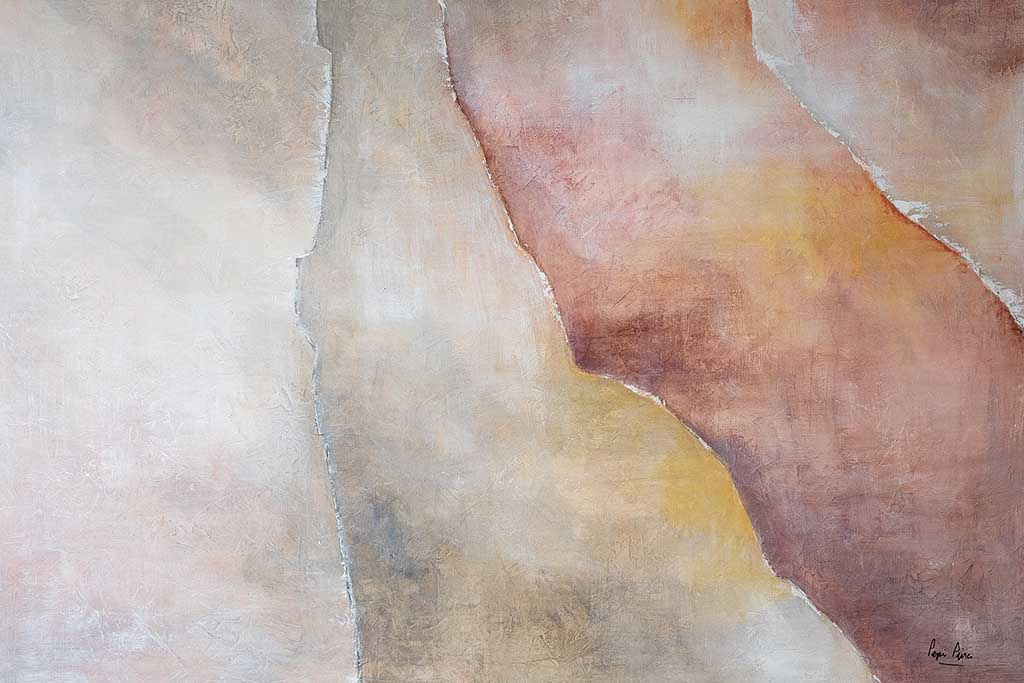
Beauty is in the eye of the beholder. This is certainly true when it comes to abstract art. It is also a fact that humans fear what they don’t know, which to some degree is true with abstraction in art.
Not everyone sees the allure or indeed the value of the work of abstract artists, as it can be difficult to understand. Whereas representational art, like Leonardo da Vinci’s Mona Lisa, which shows the subject as she would have been seen in real life, can be more easily interpreted and critiqued.
Art is extremely subjective, one person may prefer a Thomas Gainsborough landscape, whereas another is completed blown away by the Russian abstract artist Wassily Kandinsky or influential US artist Jackson Pollock. In doesn’t matter whether you have an untrained eye or you are a connoisseur, as to whether you love or loathe Pollock’s splattered canvases.
What is abstract art?
The term abstract art covers a multitude of forms from figures to landscapes, objects, shape and non-objective art. The dictionary definition of abstraction is “freedom from representational qualities in art”, as opposed to a style or a movement. The Tate museum’s website describes the movement as, “abstract art is art that does not attempt to represent an accurate depiction of a visual reality but instead uses shapes, colours, forms and gestural marks to achieve its effect”.
A potted history of abstract art
Influenced by post-impressionists, such as Vincent Van Gogh and Paul Gaugin, abstraction dates back to the 19th century. Abstract artists challenged the status quo, moving away from the traditional representational art of biblical scenes, mythology and historical figures. Unfortunately, the two world wars curbed the growth of abstract art for a while. At the end of second world war, ‘abstract impressionism’ appeared in New York in the 1940s, which grew into the European and US abstract art and sculptures that we are familiar with today.
The purpose of abstract artwork
There is and has always been a question mark over the purpose of abstraction and if there is a point to deconstruction. Traditionalists question the validity and value of art that doesn’t depict anything recognisable from the real world, does it have any aesthetic value?
Whereas the artworld has a much more open mind. If you look at recent modern art, there is an obvious trend towards the work of abstract artists. Many museums, such as the Tate Modern in London, are keen advocates of exhibiting abstract non-representational artworks.
The Tate Museum explains that abstract art has played an important role in modern art by delivering simple, pure and spiritual works designed to broaden the viewers horizons. Patterns, lines, textures, colours and forms are used to convey the artists thoughts, providing a medium for them to express themselves, which is not possible in traditional representational art.
The purpose is twofold, the artist gets to understand and express their inner self, whilst the viewer can appreciate the creativity, imagination and individuality that abstraction in art allows. In other words, viewing abstract art is a unique experience, the emotional connection and meaning will differ for everyone.
Abstract artists
It is commonly believed that abstract artist Kandinsky is the father of abstract art. However, the first known abstract artist was in fact Swedish artist, Hilma af Klint who opened the door for other notable abstract artists which if not household names, their works are instantly recognised like the aforementioned Pollock and Piet Mondrian’s Red, Blue and Yellow.
Decorating your home with abstract art
However, you don’t need to have the budget for a priceless work of art, it is possible to commission your own abstract artworks. Experienced abstract artists, such as Marbella based Studio’s in-house artists, can create individual abstract artworks to suit your specific requirements, budget and tastes.
When commissioning bespoke artwork from an abstract artist, they may have a specific subject in mind, however the finished work of art will not be representational. Instead, it will be stylised and distorted, conveying a feeling rather than an accurate depiction of an object.
Coming back to the value of abstract art… even though often misunderstood, abstract art has its own place in history and many pieces are worth millions, if not priceless.
If you would like to commission a piece of custom artwork or to view the range of artwork and decorative items available at Studio 2 visit the website, pop by our workshop in Puerto Banús or get in touch on welcome@studio2artdesign.com.
